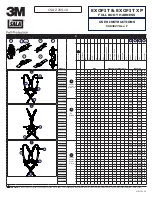
Page 18
Analyzer Q1
Witschi Electronic Ltd
9.2.4
Measurement Time
The measurement time for correctly determining the average consumption of analogue watches
must correspond to a pulse period of the stepping motor or to a multiple thereof.
When the
TIME
parameter is set to
Auto
, the measurements are performed automatically over 2
pulse periods and, in the case of watches with pulse period >5 s, over a single pulse period.
Another measurement time can be selected manually for carrying out special measurements. The
manually selected measurement time is identical for the rate and consumption measurements.
The IC current is always measured during a 2 s measurement time.
The IC current of LCD watches is the total current.
Please note: The first result for the total current of LCD watches only appears after 35 s.
9.2.5
Result Display
The results for the current are only displayed when a current is flowing; they are masked when there
isn’t any current flowing.
The total current and the IC current are displayed separately.
In addition, the instantaneous consumption appears in graphical form on a logarithmic scale. The
instantaneous value is always measured with a 2 s measurement time (value in IT2s), irrespective of
the selected measurement time.
The rate deviation is measured at the same time as the current measurement and the pulse
parameters are analyzed (see chapter 7).
Typical values
The manufacturer data are binding as regards the maximal admissible consumption of the watch.
The typical current consumption of a modern analogue quartz watch with seconds lies
approximately between 0.8 and 1.2 µA and approximately between 0.5 and 0.7 µA for watches with
a longer pulse period (without seconds).
9.3
Minimum Operating Voltage
The minimum operating voltage supplies information on the power reserve of the watch and its
capability to function even with a nearly exhausted or strongly stressed battery. The correct
















































